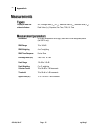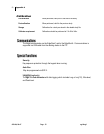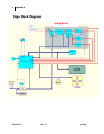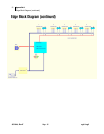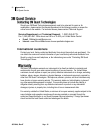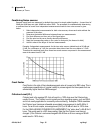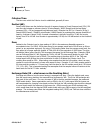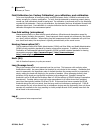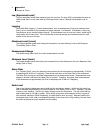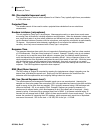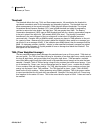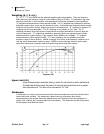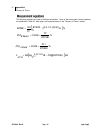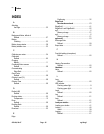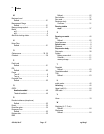
60 Appendix B
Glossary of Terms
053-644, Rev E Page 60 eg4 & eg3
Field Calibration (vs. Factory Calibration), pre-calibration, post-calibration
To be sure the dosimeter is functioning within specified tolerance limits, it should be returned to the
factory annually for a factory recalibration. To verify that the dosimeter is measuring properly during
normal use, field calibrations should be performed. Pre-calibration is performed prior to any data being
recorded by the dosimeter. During a pre-calibration, the dosimeter level may be adjusted to match the
calibrator output level. Post-calibration is a simple verification that the instrument has remained in
calibration throughout the measurement period.
Free field setting (microphone)
Measurements made in an area without sound reflections, diffractions and absorptions caused by
nearby objects (including the operator). Sound waves are free to spread out continuously, like ripples
on a pond, without reflection. When making free field measurements with a dosimeter set up for use
as a sound level meter, the microphone is typically pointed directly at the sound source.
Hearing Conservation (HC)
The Occupational Safety and Health Administration (OSHA) and Mine Safety and Health Administration
(MSHA) provide regulatory standards for hearing conservation programs. In addition, the American
Conference of Governmental Industrial Hygienists (ACGIH) provides industrial standards for hearing
conservation programs. http://www.osha.gov/ , http://www.msha.gov/ ,
http://www.acgih.org/home.htm
Hertz (Hz)
Unit of vibration frequency in cycles per second.
Lavg (Average Level)
Lavg is the average sound level measured over the run time. This becomes a bit confusing when
thresholds are used. Any sound below the threshold is not included in this average. Remember that
sound is measured in the logarithmic scale of decibels therefore the average cannot be computed by
simply .adding the levels and dividing by the number of samples. When averaging decibels, short
durations of high levels can significantly contribute to the average level. Example: Assume the
threshold is set to 80 dB and the Exchange Rate is 5 dB (the settings of OSHA’s Hearing Conservation
Amendment). Consider taking a one-hour noise measurement in an office where the A-weighted
sound level was typically between 50 dB and 70 dB. If the sound level never exceeded the 80 dB
threshold during the one hour period, then the Lavg would not indicate any reading at all. If 80 dB
was exceeded for only a few seconds due to a telephone ringing near the instrument, then only those
seconds will contribute to the Lavg resulting in a level perhaps around 40 dB (notably lower than the
actual levels in the environment).
Lep,d
Daily personal noise exposure level.



